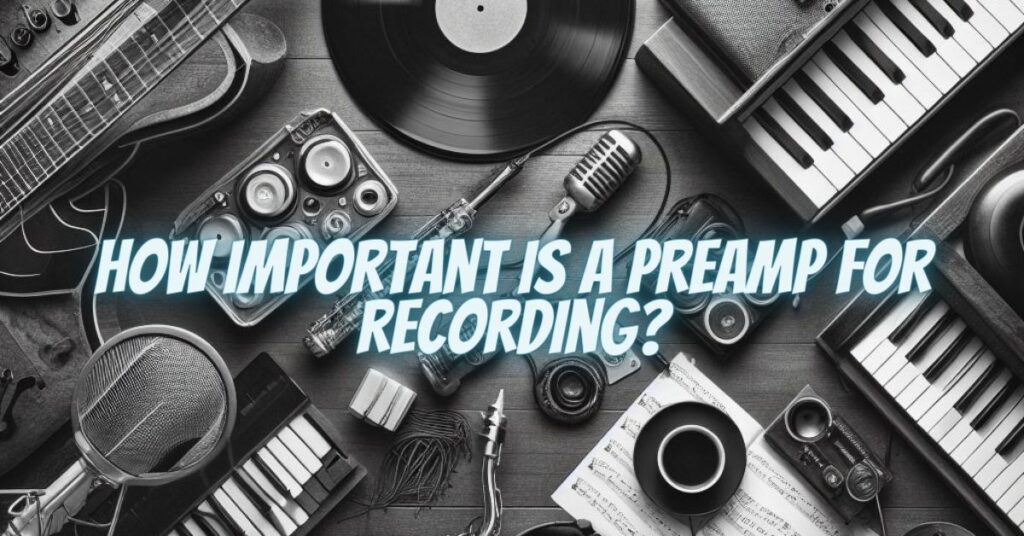In the intricate realm of audio recording, preamps stand as unsung heroes, quietly shaping the sonic foundation of music production. These versatile devices amplify and shape the delicate signals from microphones and instruments, imbuing them with warmth, clarity, and the unique sonic character that defines a musical performance or recording. While power amplifiers provide the muscle to drive speakers, preamps play a crucial role in ensuring that the signal is strong enough to be captured by recording devices and processed into a captivating final product.
Amplification and Signal Integrity: The Essence of Preamplification
The primary function of a preamp is to amplify the weak electrical signal generated by a microphone or instrument, typically by a factor of 50 to 100 times. This amplification process is essential for ensuring that the signal is strong enough to be recorded without losing its nuances and dynamic range. However, simply boosting the signal is not enough; a preamp must also maintain the integrity of the signal, preserving its original tonal characteristics and preventing noise or distortion from creeping in.
Shaping the Tonal Palette: From Warmth to Brilliance
Beyond amplification, preamps play a pivotal role in shaping the overall tonal character of the recorded sound. This is achieved through equalization (EQ) controls, which allow for adjusting the balance of frequencies across the audio spectrum. For instance, a preamp’s EQ can be used to enhance the low-end warmth of a vocalist’s voice or accentuate the high-end sparkle of an acoustic guitar. Additionally, some preamps offer additional features such as compression, which can be used to smooth out dynamic peaks and create a more consistent sound.
The Impact of Preamp Choice on Sonic Expression
The choice of preamp can have a profound impact on the overall sound of a recording. Different preamps impart their unique tonal signatures to the signal, influencing the warmth, brightness, and overall sonic personality of the recording. For example, a tube preamp may enhance the richness of a vocalist’s voice, while a solid-state preamp may emphasize the clarity and punch of a guitar solo.
Considerations for Selecting the Right Preamp
Several factors should be considered when selecting a preamp for recording:
-
Genre and Playing Style: Consider the desired sonic aesthetic of your genre or playing style. Tube preamps are often preferred for blues, rock, and jazz, while solid-state preamps offer versatility across genres.
-
Microphone or Instrument Compatibility: Ensure the preamp’s input impedance is compatible with the intended source, whether it’s a microphone, instrument, or line-level signal.
-
Tonal Preferences: Evaluate the preamp’s tonal characteristics and select one that complements your desired sound.
-
Additional Features: Consider features like onboard effects, multiple channels, and connectivity options.
-
Budget: Determine a realistic budget and consider the value proposition of each preamp within your price range.
Preamps are not simply signal boosters; they are sonic sculptors, shaping the tonal foundation of music production and live performances. By understanding the importance of preamps in recording, exploring their impact on tonal character, and considering the factors influencing preamp selection, musicians, engineers, and producers can make informed decisions that elevate their audio experiences and unleash the full potential of their sonic endeavors. Whether crafting intricate studio recordings or capturing the energy of a live performance, the right preamp can transform a signal into a captivating sonic tapestry, imbued with warmth, clarity, and the essence of the music itself.


